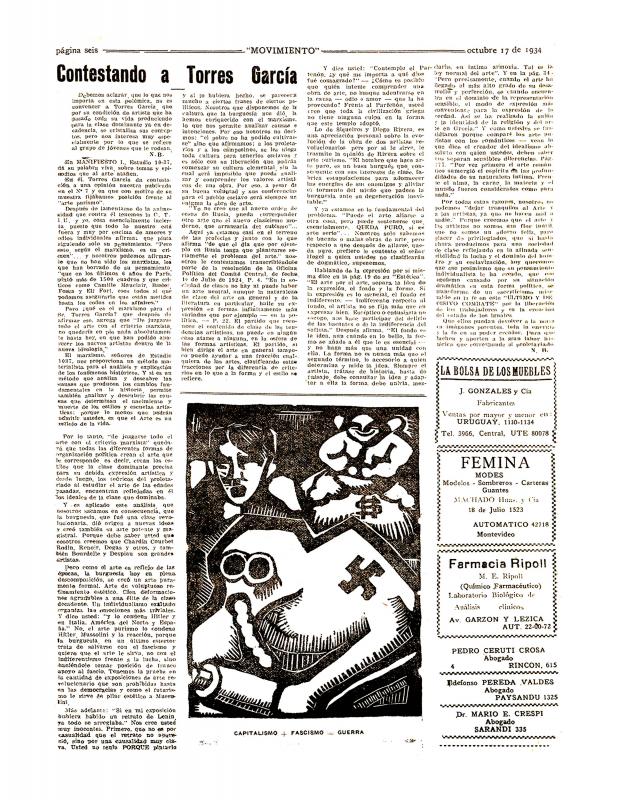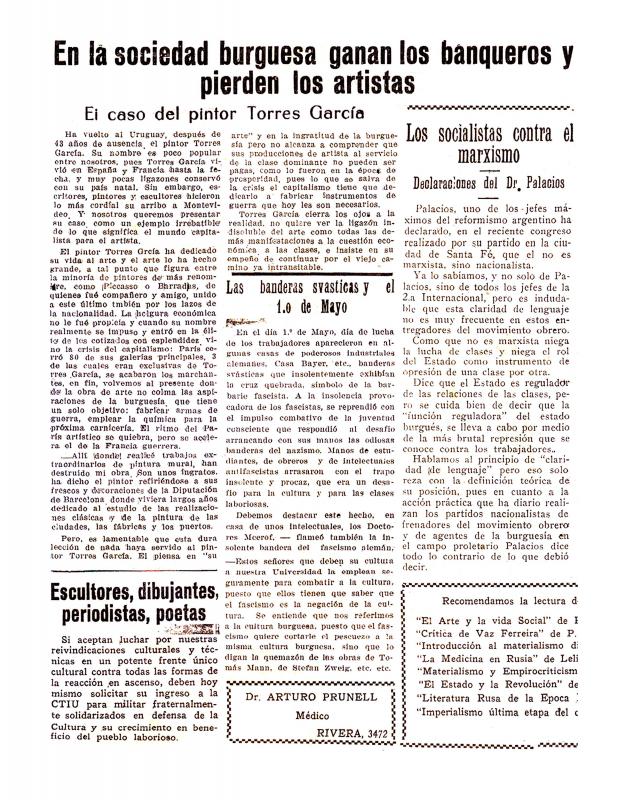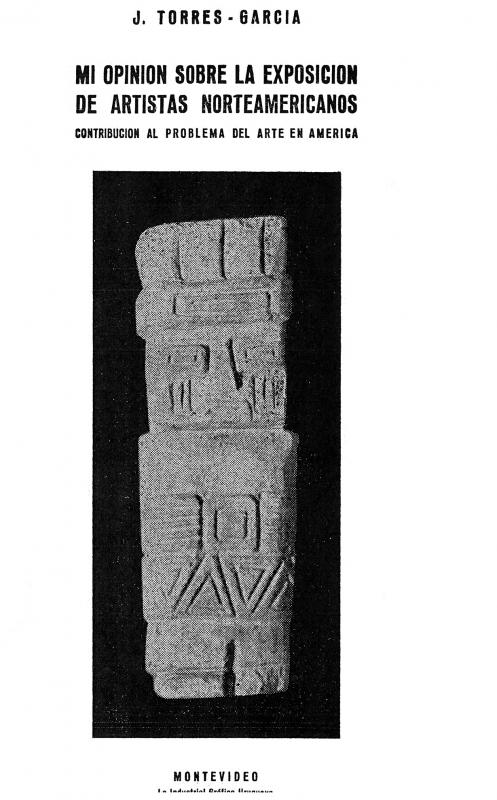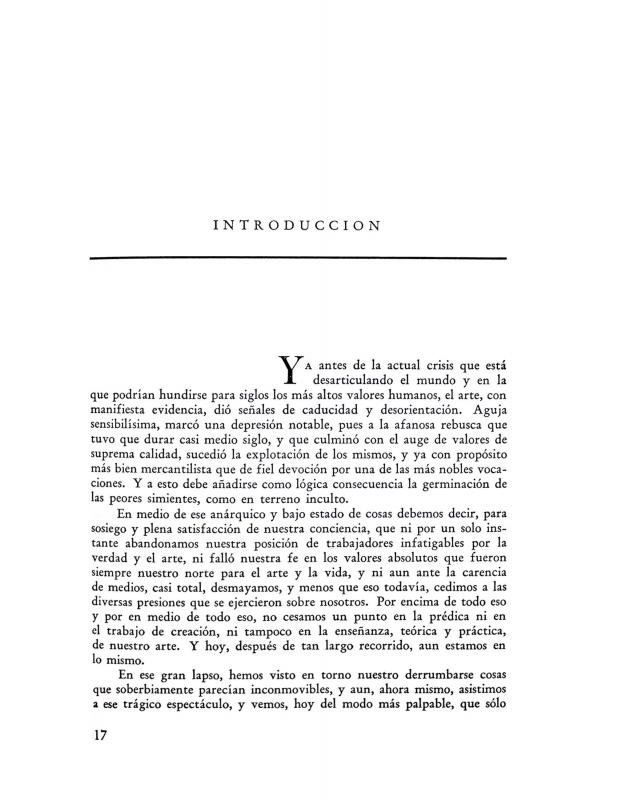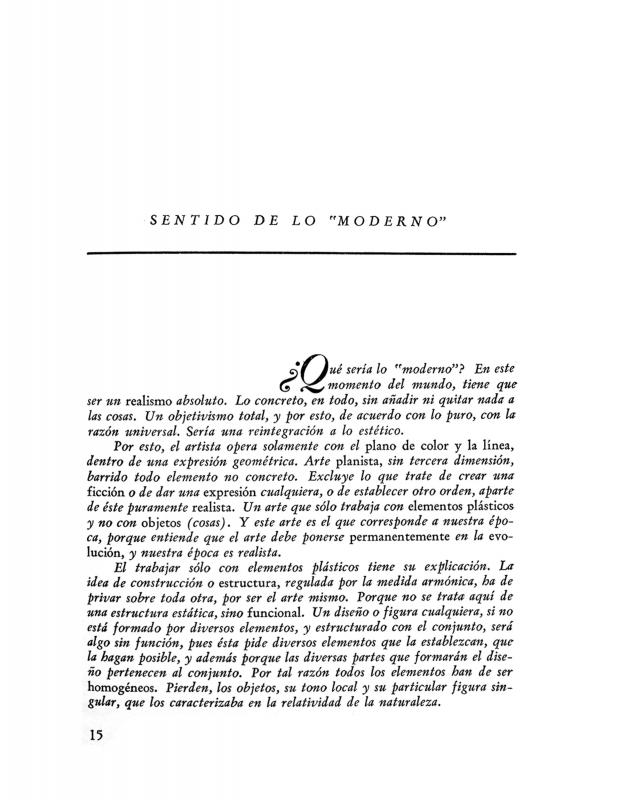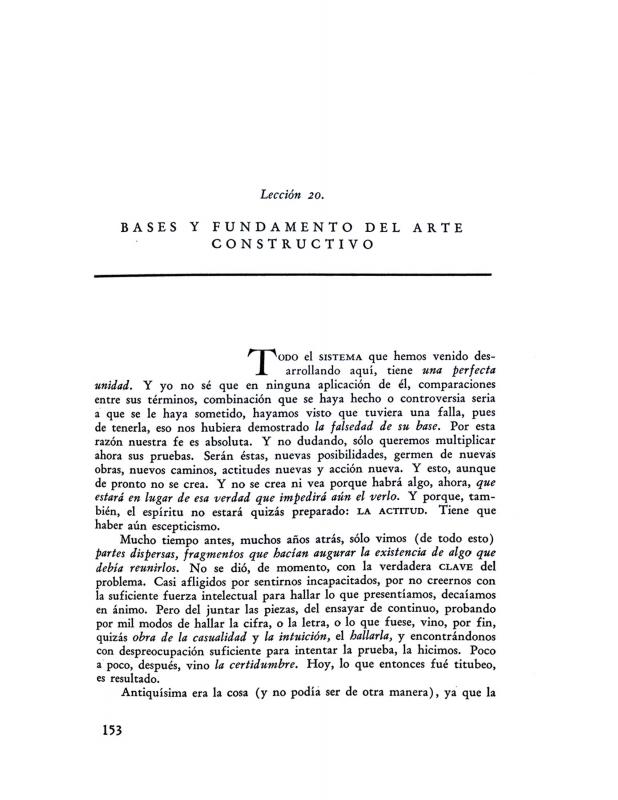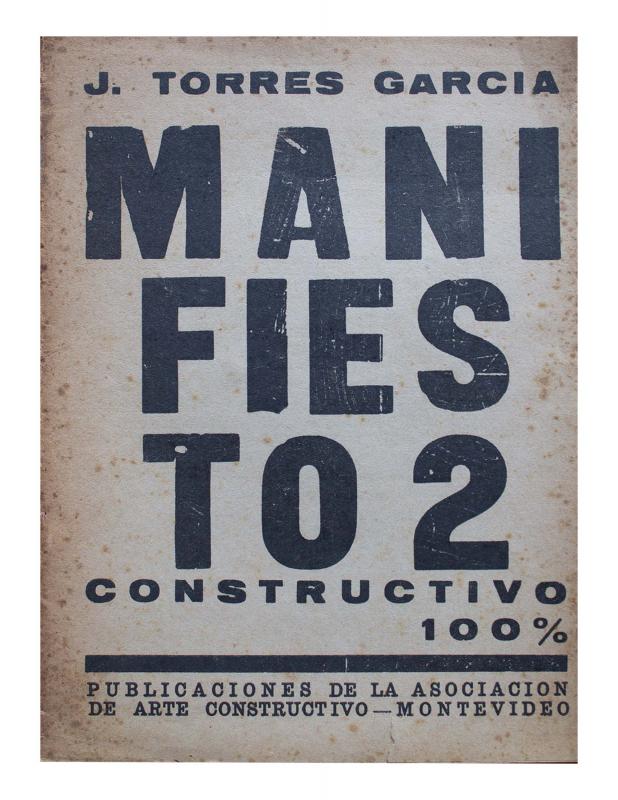In the late 1920s, painter Norberto Berdía (1900–83) was heavily influenced by the ideology of his communist friend, Argentine sculptor Luis Falcini (1889–1973). He joined the ranks of the Confederación de Trabajadores Intelectuales del Uruguay (CTIU) soon after it was founded in 1933. Berdía was among the artists taken with the ideological and pictorial discourse voiced by Mexican muralist Siqueiros during his visit to the Río de la Plata, a discourse that opposed the “easel painting” he had once pursued, as well as salons and juried shows. Siqueiros’s vision revolved around realist mural painting with political themes pertinent to the urban and rural proletariat. [Regarding the exchange of accusations between the confederation and Torres García, see in the ICAA digital archive by Norberto Berdía “Contestando a Torres García” (doc. no. 1208175) and “En la sociedad burguesa ganan los banqueros y pierden los artistas” (doc. no. 1208127)].
In this article, Berdía compares Joaquín Torres García (1874–1949) to Siqueiros, the first of whom arrived in Montevideo one year after the second. He argues that Torres García’s “pure art” is a form of romanticism, that is, an aesthetic ruse devised to avoid the role the artist should play in the sociopolitical reality of his time. “[Torres García’s] backward graphism […] leads us to dismiss the terrible reality in which we live.” Berdía is mistaken about certain facts in Torres García’s life: in 1914, the painter did not go to Paris to take in Cubism, as the writer asserts, but rather stayed on in Barcelona, only moving to New York in 1920. This and other things—among them the comparison that Berdía makes between the individualist art of the Uruguayan and the collectivist art of the Mexican—spurred Torres García to write a harsh rebuttal in his “Manifiesto 1” (August 1934).
[For further reading, see in the archive the following texts by Joaquín Torres García: “Con respecto a una futura creación literaria” (doc. no. 730292), “Lección 132. El hombre americano y el arte de América” (doc. no. 832022), “Mi opinión sobre la exposición de artistas norteamericanos: contribución” (doc. no. 833512), “Nuestro problema de arte en América: lección VI del ciclo de conferencias dictado en la Facultad de Humanidades y Ciencias de Montevideo” (doc. no. 731106), “Introducción [en] Universalismo Constructivo” (doc. no. 1242032), “Sentido de lo moderno [en Universalismo Constructivo]” (doc. no. 1242015), “Bases y fundamentos del arte constructivo” (doc. no. 1242058), and “Manifiesto 2, Constructivo 100%” (doc. no. 1250878)].

